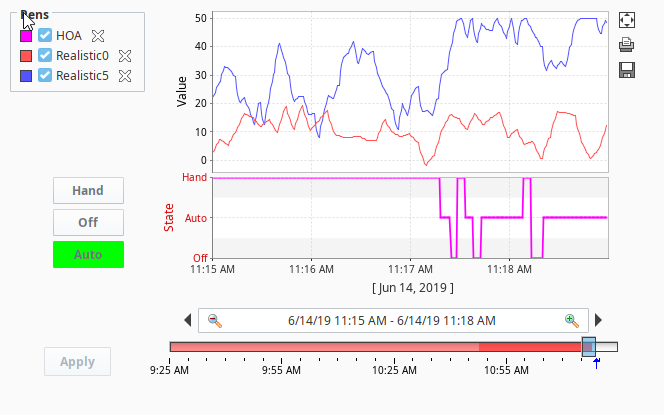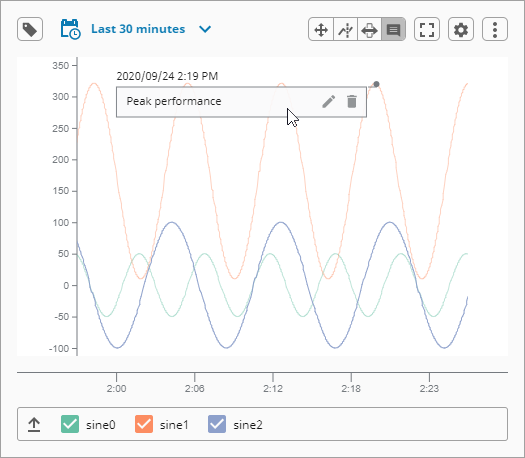Tag Historian
The Tag Historian module provides power and flexibility for storing and accessing historical data. When history is enabled on an Ignition Tag, data is stored automatically in your SQL database in an efficient format. This data is then available for querying through scripting, historical bindings, and reporting. Options for partitioning and deleting old data help to ensure the system stays maintained with minimal extra work. Also, you can drag-and-drop Tags directly onto an Easy Chart component to create trends or onto a table to display historical values. Tag Historian's robust querying features provide you great flexibility in how you retrieve the stored data.
Tag Historian Querying
While the data is stored openly in the database, it does not lend itself well to direct querying. Ignition offers a range of built-in querying options that are very powerful and flexible. In addition to simple on-change querying, the system can perform advanced functions such as querying many Tags from multiple providers, calculating their quality, interpolating their values, and coordinating their timestamps to provide fixed resolution returns. Tag history bindings allow you to pull Tag history data that is stored in the database into a component through a binding. The binding type, which is only available for Dataset type properties, runs a query against the Tag Historian.
For more information, see Tag History Bindings in Perspective or Tag History Bindings in Vision.
Querying can be performed on tables and charts through the Historical binding, Nested Queries, and through scripting. You can also query Tags from the Reporting module.
Charts that Display Historian Data
With the Vision module Easy Chart component you can create powerful timeseries charts from Tag Historian data. As of 8.1.0, the Perspective module has a Power Chart component with similar capabilities. Both components enable you to drag and drop history-enabled Tags onto a chart to create chart pens and data trends. Your charts and graphs can include subplots, axes, digital offsets, and moving averages. You can quickly and easily turn your historical and realtime data into dynamic charts and graphs for your users. These charts can be configured in the runtime to give users quick access to data in the time range they need.
| Vision Easy Chart | Perspective Power Chart |
|---|---|
 |  |
Store and Forward
The Store and Forward system provides a reliable way for Ignition to store historical data to the database. The Store and Forward system is not exclusively part of Tag history, but systems such as the Tag Historian and Transaction Groups use it to prevent data loss and store data efficiently using a record cache.
Data Storage
Historical Tag values pass through the Store and Forward system before they are stored in the database connection associated with the historian provider. The data is stored according to its data type directly to a table in the SQL database, with its quality and a millisecond resolution timestamp. The data is only stored on-change, according to the value mode and deadband settings on each Tag, thereby avoiding duplicate and unnecessary data storage. The storage of scan class execution statistics ensures the integrity of the data. While advanced users may change the table according to their database to be more efficient (for example, using a compression engine), Ignition does not perform binary compression or encrypt the data.